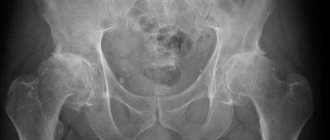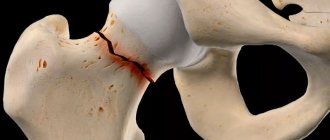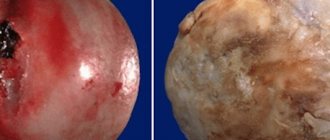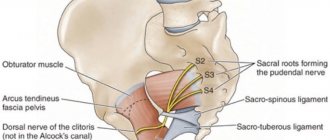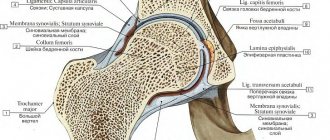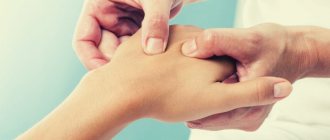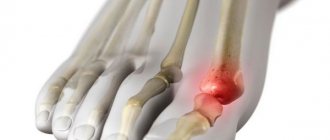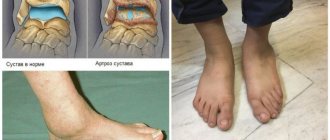Misalignment or excessive local tension is the most common cause of pain in runners. It is through this mechanism that pain is formed in the area of the kneecap, which is called “runner’s knee” (also known as chondromalacia of the patella; also known as patellofemoral syndrome; also known as patellofemoral syndrome).
The same mechanism forms another “popular” problem: pain on the outside of the knee, called iliotibial band friction syndrome (aka iliotibial syndrome; aka ITB syndrome; also called “runner’s knee” in some sources). This list will also include various pains in the lower leg, hip joint, lumbar region and even in the upper back.
The most unpleasant thing is that most often it “warps” or “tightens” too much in one place, but it hurts in another! For example, pain in the knee area can be caused by both chronic overload of the lower leg and thigh muscles. Moreover, when conducting an MRI examination of the knee joint in the early stages of the occurrence of such pain, the joint may turn out to be practically healthy, but for some reason the knee will hurt. It is very important to remember such “oddities”, even if you do not see the corresponding cause-and-effect relationships.
Injury Prevention
To avoid having to seek medical help for your injuries later, Lowenthal suggests a number of preventative measures that I completely agree with. So, in order to prevent muscle strains, you should develop flexibility and train strength - this will strengthen the muscles and ligaments. In addition, it is necessary to exclude non-specific loads, such as constant cycling. This will reduce the impact on your feet, knees, and hips. Such precautions are especially necessary for people over 50 years of age. In addition, it is important to strictly follow the methodological recommendations and principles of training organization that I presented in this book. All this will help avoid injury.
The cause of the pain syndrome and its localization are often in different places
The most common causes of “distortions” and “tensions”:
- insufficient muscle elasticity (“clogged” from previous load or poor stretching),
- load asymmetry such as “medial - lateral” or “left - right”,
- relative weakness of individual muscles (presence of a “weak spot”),
- excessive local overload (excessive emphasis on the outer arch or forefoot, etc.).
Next, let's look at each of these points in a little more detail.
Insufficient elasticity of muscles and ligaments
Stretching exercises for runners are very important - everyone seems to know this. If you ignore stretching, then nothing bad will happen at first, but the likelihood of avoiding problems in the long run is quite small. Once normal developmental work begins, the countdown flywheel will begin, and most runners will eventually get sore. One of the characteristic and common problems caused by lack of stretch marks is iliotibial tract friction syndrome (ITB syndrome).
Iliotibial band friction syndrome (ITB syndrome)
Since more details about this problem have been written separately, here we will only once again draw attention to this: the pain is localized on the outer side of the knee, but its root cause is not at all in the knee joint, but in insufficient elasticity (and, as a result, excessive tension) of the iliotibial tract. Prevention of this pain is essentially the same - maintaining sufficient elasticity of the corresponding muscles and ligaments, including through regular stretching exercises (stretching the lateral surface of the thigh along with part of the gluteal muscles). Treatment at an early stage consists of reducing stress with mandatory stretching and massages. In a neglected state - go to the doctors. But after healing, you will still need stretching - they are mandatory for runners.
Load asymmetry
There are a lot of options for asymmetry (even different leg lengths), but most often we have to talk about either destructive external factors or errors in technique. One example is turning the feet either inward or outward (including just one foot). Such an error (often associated with the individual characteristics of a particular person) leads to overload of the corresponding muscles and ligaments. First, the foot itself is overloaded, but after it comes the lower leg, knee, thigh and then upward with all the stops.
Sprained feet can cause problems in all joints of the legs and even pain in the spine
Pain or fatigue in such cases appears in the most vulnerable place, but it is important to treat not only the location of the pain, but also the running technique - constantly monitor not only the legs, but also the work of the arms and shoulders (do not throw them to the sides or twist body). It turns out that the patient needs not only a doctor, but also a trainer or an experienced friend who will monitor his technique.
Weakness of individual muscles
Historically, “runner's knee” was called chondromalacia, that is, friction of the patella (patella) on the femur that occurs under certain circumstances. Normally, this friction should not exist, but at certain moments it can still arise. As a rule, this happens with severe muscle fatigue, after some 20 or 30 kilometers of competitive running, or when trying to reach large weekly volumes.
Degrees of coxarthrosis
Orthopedists distinguish three degrees of arthrosis with characteristic signs of each of them:
- The first is moderate pain, lack of stiffness of movement. The x-ray shows a slight narrowing of the joint space, and isolated osteophytes are possible.
- The second is that the aching pain persists even at rest, movements are difficult, especially painful when trying to turn the foot of the straightened leg to the side. Lameness and crunching appear. The X-ray shows a deformation of the femoral head and a large number of osteophytes. The joint space is narrowed by about a third.
- Third, the pain does not subside around the clock, the muscles of the thigh and buttocks atrophy, the body tilts towards the affected side. The x-ray shows a deep deformation of the joint, a strong narrowing of the joint space and almost reattachment of the bone surfaces.
The most favorable prognosis is for arthrosis of 1-2 degrees
Runner's knee (patellofemoral syndrome)
Today it is believed that the main reason that causes patellar distortion is weakness or overwork of one (or more) of the heads of the quadriceps femoris muscle. While this muscle is in a fresh state, the knee works normally, but after significant fatigue accumulates, chondromalacia appears. For beginners, it may appear within 10-15 minutes after the start of running, for more experienced ones - by the end of the second or beginning of the third hour of running, and so on. That is, this pain in the knee is primarily associated NOT with the work of the knee joint itself, but with the muscles located above the joint. Again, the cause of pain is not where the pain itself is!
It is interesting that strength work (muscle strengthening) in many cases turns out to be a lifeline for people faced with both chondromalacia of the patella and the PBT friction syndrome described above. Strong muscles “hold” better: they get tired later, don’t get clogged up so much, and so on.
Excessive local congestion
Pain may appear with moderate general loads if individual (even small) muscles, ligaments, etc. cannot withstand. This often happens when the forefoot or its outer arch is overloaded. Beginners often become victims of a kind of sports marketing, starting to run on their toes instead of using the classic running technique.
Running off the toe has its advantages. but for beginners, it’s more about SBU than actually running.
The same local overload can be created by:
- running uphill
- running on sidewalks with a noticeable side slope,
- beginners use shoes with very thin and elastic soles,
- selection of special running exercises (SBU),
- gross mistakes in running technique,
- individual anatomical features...
Very often, the shin is the first to suffer from local overloads - here, beginners experience pain, discomfort and muscle congestion earlier.
The shin is a weak point
Early in their running careers, almost all runners experience delayed calf pain in the evening or the day after training. Later, when this muscle adapts to the load and begins to “hold”, other problems emerge, but you should not forget about the lower leg. It is a weak point for most. Many pains that arise in other places appear as a result of “clogging” of one of the muscles of the leg - there are many of them here.
Conservative treatment
As is the case with the treatment of arthrosis of the knee joint, therapy should be comprehensive. It includes the following activities:
- taking painkillers and anti-inflammatory medications;
- vasodilators improve blood circulation;
- chondroprotectors initiate the restoration of destroyed cartilage tissue, but do this for quite a long time;
- plasmolifting is an expensive method of stimulating regenerative processes using blood plasma injections;
- physiotherapy – the choice of method depends on the clinical picture, age, and preferences of the patient;
- diet therapy – for weight loss.
Calf muscles
The shin is the first transmission link between the foot and the rest of the body. If you overload your foot, your shin will also hurt or become clogged. And when problems arise above the shin, it very often turns out that something is already “clogged” inside the shin (even if nothing hurts here). Sometimes it’s worth rubbing the shin well (with your hands or massagers) - this “cloggedness” can be detected.
Among all the problems of the lower leg, there is one particular one that raises the most questions - pain in the area of the tibia at approximately 2/3 of its height from the ankle joint.
Recently, athletes and even some coaches have begun to call any pain in the area of the tibia with what they think is a general word, “shin splint” from the English Shin splints - “Split shin”. Such a generalization indicates a reluctance to understand or a lack of understanding that there can be many different causes of pain. This is about the same as calling any form of coronary heart disease a heart attack.
Tibial syndrome
The same “Shin Splint” is a separation of the periosteum (the membrane of the bone through which fascia, tendons, and, ultimately, muscles are attached to it) from the bone itself. This is a fairly serious injury, the occurrence of which in a runner (and not a jumper or acrobat) requires a very high degree of recklessness and prolonged ignoring of the pain syndromes that preceded this injury.
In the place under discussion, two muscles are attached to the tibia, which are called the anterior and posterior tibial muscles (their attachment points are slightly spaced to the medial and lateral sides of the bone). Among other things, both of these muscles are responsible for holding the arch of the foot during its transverse vibrations. Accordingly, lateral overload of the foot leads to overload of these muscles, causing them to become “clogged”, and after this, excessive tension of the tendons appears, which will pull the periosteum causing pain. At first, they are correctly called tibial syndrome.
Ignoring the pain described and continuing to train with “clogged” muscles will lead to the formation of an inflammatory process in the periosteum area. This will be called periostitis. But if you continue to ignore it, then over time the same “splint” may occur - a separation of the periosteum.
By the way: in addition to problems one way or another related to the periosteum, a pain syndrome may occur in the same place, which is called anterior interfascial space syndrome. This is pain caused by local ischemia (poor circulation) due to compression of the arteries by the “clogged” muscles of the anterior part of the leg.
Common running injuries
“Runners are, for the most part, intellectuals. Having been traumatized, they often believe that they can make a diagnosis and begin treatment on their own,” says Dr. Lowenthal and warns against such “witchcraft.” However, this does not mean that runners do not need to understand what common lower extremity injuries are associated with. Below is information about the most common injuries that plague runners and the preventive measures available.
Many major marathons have well-staffed medical teams stationed at the start, along the course and at the finish line, and runners can get the advice they need if needed. Try to take advantage of the opportunity to talk with specialists about your problems.
Dangers of surgery
If conservative therapy does not produce results, the patient may be prescribed surgical treatment in an operating room. Almost all operations require hospitalization and long recovery over many months. The following intervention options are possible:
- Puncture – pumping out excess fluid from the joint cavity to temporarily eliminate pain and improve mobility. The procedure requires multiple repetitions and brings very short-term relief.
- Arthroscopy – cleaning the joint from fragments of cartilage tissue and washing the cavity with a medicinal solution. For such an operation, it is enough to make several punctures without opening the joint cavity.
- Periarticular osteotomy involves an artificial fracture of the femur and its fusion at the desired angle. The procedure is traumatic, the effect lasts for a maximum of 2-5 years, it is not advisable to play sports after this.
- Endoprosthetics is a complete replacement of a joint with an estimated service life of up to 20 years. The operation is very serious, requires long-term rehabilitation, sometimes causes complications, and also has a number of contraindications. An important point is the almost unattainable cost for many.
Not everyone can pay for endoprosthetics
Foot injuries
Dr. Lowenthal points out one of the classic runners' injuries. The pain from this injury can be felt in the morning after waking up, standing on the floor barefoot. We are talking about plantar fasciitis. Pain in the sole of the foot is a consequence of inflammation of the soft tissues. The first signs of pain usually appear in the heel of the sole of the foot. If timely measures are not taken, the pain gradually moves to the Achilles tendon.
In this case, a good orthopedist will suggest appropriate insoles for shoes. This insole, by supporting the arch of the foot well, helps relieve pain. However, Lowenthal cautions runners against spending money on expensive insoles and recommends ice therapy, physical therapy and perhaps deep massage to start. At the same time, he refers to his own experience: after a recent attack of plantar fasciitis, the doctor recommended that he avoid running and exercise on an exercise bike. It took approximately eight weeks for the leg to heal. Lowenthal strictly followed the recommendations and waited for the injury to heal completely so that there would be no relapse.
Another injury, also related to the foot, is inflammation of the Achilles tendon. One of the symptoms of this disease is that pain is felt when the ball of the foot is pulled up. A medical examination is required to establish an accurate diagnosis. If you regularly strengthen your foot using appropriate exercises, inflammation in the Achilles tendon can be prevented. One of these exercises: from a standing position on a gymnastic bench on your toes, slowly lower your heels below the level of the support and then return to the starting position. This exercise is also useful for preventing plantar fasciitis.
Blisters
It would seem that such a trifle as a blister cannot cause any special problems. However, this minor soft tissue injury can cause big problems, especially if it happens during a marathon. Take preventive measures: first of all, make sure that your feet remain dry. Wear comfortable, high-quality shoes, always with socks: this will protect your toes and bunions. If you feel a burning sensation or see signs of irritation on the skin, use antibacterial healing creams. If, after taking these measures, the blister continues to bother you, pierce it with a sterile pin, but do not cut off the damaged skin. Then apply antibacterial ointment, cover the wound with a bactericidal gauze pad and seal it with a band-aid. Healing gels and creams should be applied immediately as soon as you feel a blister starting to form. When Gloria was running the New York City Marathon, she felt a “hot spot” on her foot that was about to turn into a blister, and she took a stick coated with a special gel from the volunteers. At the 21st kilometer, she stopped briefly, took off her shoes, socks and smeared the wound with gel. And I finished the marathon without any problems.
The more kilometers left behind, the higher the risk of foot injury. A long series of steps, when the supporting leg hits the road surface over and over again, can result in hemorrhage under the nails. This injury is not life-threatening, but is so painful that you will need medical attention.
Dr. Lowenthal told how in 1979, after finishing the Boston Marathon, he struggled to get to his hotel. The doctor punctured the nail to relieve the pressure, and only then did Lowenthal experience temporary relief. I must say that this type of injury, also called “black toenail,” is very common among long and ultra-distance runners. It can take up to nine months for a new nail to grow.
Shin injuries
Shin injuries are very painful and take a long time to heal. They arise in the soft bone tissues of the lower leg as a result of inadequate training and competitive loads.
Be careful. Rain, spilled water at the food station, ill-fitting shoes, wrinkles in socks and other factors can lead to blisters.
These injuries must be diagnosed by professionals. If the diagnosis is correct, you should stop running, apply massage and carry out an anti-inflammatory course of treatment. Shin injuries can be caused by a variety of reasons, including poor muscle development, poor running technique, and overtraining. If such an injury is allowed to occur, the disease can progress and even lead to cracks and fractures of the bones in the lower leg. Treatment includes long rest, wearing orthopedic shoes, correcting running technique, and strengthening the muscular system.
Knee injuries
Knee injuries are undoubtedly the most common and problematic among runners. In addition to bone tissue and cartilage, the knee joint contains tendons to which the quadriceps femoris muscle is attached. If you feel pain inside or near your knee, you should promptly consult a specialist, make a diagnosis and undergo a course of treatment. Repeated injuries are particularly difficult to treat.
Chondromalacia is the wearing away or softening of the cartilage in the kneecap. This injury can be caused by running stress. In addition, as we get older, tissues age along with us. As we gain weight, we put extra stress on our joints. Overtraining can only make this problem worse.
Lower back pain
Since the muscles in the lumbar region are located close to each other, an erroneous diagnosis is quite possible. Often, lower back pain is a consequence of an intervertebral hernia, in which the soft bone tissue of the vertebra becomes inflamed. Sometimes the patient is given a steroid injection or a spinal disc is removed, which requires a long recovery. Buttock pain is also often attributed to spinal problems. Following an incorrect diagnosis, a spinal disc is sometimes mistakenly removed, although the source of pain is actually located elsewhere. Injuries in the lumbar region occur due to inadequate loads or lack of flexibility. Flexibility work and deep massage can be good preventative measures against such injuries. If lower back pain does not improve after rest, you should visit an orthopedist and physiotherapist.
It happens that the first pain in the knees begins simultaneously with pain in the lumbar back. If pain from the lower back extends down the leg to the foot, this is a sign of lumbosacral radiculitis. In runners, this usually occurs due to increased pressure on the lumbar nerve as a result of the impact of placing the feet on the road surface. Lumbosacral radiculitis requires professional medical treatment.
Headaches and general illnesses
If a headache occurs during exercise, you should stop and wait a while to see if it goes away. If the pain does not go away, you need to understand the root cause. Headaches, like muscle cramps, can be a result of dehydration. This often happens to new runners or those who are not sufficiently acclimatized to hot or humid weather. When you are sick, there is no place for training; Complete rest is necessary: you should not expose the body to additional stress. A cold accompanied by fever also requires absolute rest.
Diagnosis of coxarthrosis
During the examination, the orthopedist examines the degree of leg mobility, gait, and appearance of the patient. Sometimes a diagnosis can be made based on an X-ray, and sometimes additional examinations are necessary - MRI of the joint, etc.
- A complete blood test shows whether there is inflammation. With coxarthrosis, there should be no significant changes in the results.
- A biochemical blood test also allows you to differentiate arthrosis from arthritis.
- X-rays show the degree of joint damage, bone deformation, bone compaction, and the width of the joint space, but do not show the condition of the soft tissues.
- MRI provides information that cannot be obtained with x-rays.
- Ultrasound allows you to assess the amount of joint fluid and the condition of soft tissues.
MRI is the most informative method for diagnosing coxarthrosis
Pain associated with shoes
Many beginning runners have heard that running shoes should match individual anatomical features. But not even all advanced running fans know that this correspondence is also closely related to running technique and even its speed. Since we talked about this in detail when we talked about pronation and foot placement in sports, here we will only note that the shoes should have the right arch support for you in dynamics (!), and not just in a standing position on a special measuring tablet. If there is a discrepancy, local overload of individual muscles and ligaments will appear, and pain may appear in the foot, lower leg, and even the knee area.
Your old running shoes can tell you a lot about your foot placement. Take a closer look at the wear pattern before you go shopping for a new pair.
A whole bunch of problems can come from having the soles of your shoes not fit properly. An overly stiff sole (for example, a non-running shoe) or a sole that does not match the shape of your arch (most often the width of the last) will put a lot of pressure on certain areas of the arch from below. This can cause inflammation of the plantar fascia (the long tendon on the arch of the foot that “strengthens” the arch of the foot from below). In medical parlance, this is called plantar fasciitis, an unpleasant sore that sometimes requires quite a long treatment.
Excessively thin and at the same time soft soles can also spell problems for beginners, although such shoes are sometimes made for advanced runners. This sole makes it easier to work with the foot, but at the same time increases the load on it. For beginners, such a load is often excessive.
Even laces sometimes create a rather curious problem at first glance, which can not only impair blood circulation when tightened very tightly, but also in some people put very unpleasant pressure on the tendons at the base of the shin, approximately at the place where the laces are tied (the extensor tendons that run here pass through to the tibialis anterior muscle). Prolonged excessive pressure in this area can also lead to problems. One simple way to avoid trouble (for people with appropriate anatomical features of the foot structure) is to use thin rubber twine instead of laces (see photo below). But most runners still don't need it.
Sometimes it's better to lace up sneakers with rubber twine
Another seemingly small detail: the size of running shoes. If for short runs the general principles of selecting shoes are quite suitable (so that the toes do not touch), then during long runs and, especially during long-distance competitions, the feet swell and increase in size. Shoes for such tasks should be half a size larger, otherwise the athlete will face very big troubles with his fingers and toenails. Such contact cannot be tolerated for long. And it's not just that you'll stain your favorite sneakers with blood. There is a high risk of serious and “lifelong” damage to the fingers and nails.
Just in case, we warn those who like to buy online that shoes with membranes and other additional inserts (including for triathlon) often turn out to be a little tighter than other models from the SAME manufacturer. If one ASICS model fits you well, it does NOT mean that another model of the same size from the same brand will suit you just as well. Before purchasing, you need to measure exactly the model you are buying!!!
Of course, shoes should never dangle on your feet. And, of course, you need to use running shoes for recreational (sports) running.
Challenges for Advanced Runners
Beginner runners on the one hand and experienced runners on the other have different problems. Almost everything described above applies to those who have been running regularly for less than three years and have moderate running volumes (say, less than 40 km per week, although any specific figure here is very arbitrary). Amateur athletes who are very keen on running sometimes run over 100 km or more every week. At this level of training, seemingly experienced runners face slightly different problems. Their list is changing, at least due to the fact that well-trained and strengthened muscles over the years of training make it possible to transfer much greater loads to the musculoskeletal system. At the same time, the muscles themselves have already acquired the skill of rapid recovery, so they do not suffer from the ailments that are typical for beginners.
Challenges for advanced runners:
- tendinitis (tendon inflammation); the Achilles tendon and tendons of the foot suffer most often,
- synovitis (inflammation of the synovial membrane of the joint); most often found in the ankle and knee joints,
- bursitis (inflammation of the bursa - the periarticular bursa); the knee is most often affected,
- fasciitis (inflammation of the fascia - connective tissues that additionally “reinforce” the muscles); most often suffers
- plantar fascia (pain on the sole near the heel);
- periostitis (inflammation of the periosteum - the film surrounding the bone); Most often the anterior surface of the lower leg hurts;
Gender characteristics
There are differences in the most common injuries between men and women. This is due to the fact that men have a larger body weight, and women have a wider pelvis and a different hormonal background from that of men.
Men, especially large ones, are more likely than women to encounter “articular” sores: bursitis, synovitis.
Women more often suffer from problems with pronation (a wide pelvis determines a greater angle of lateral deviation from the vertical in the ankle joint when placing the foot under the center of gravity). In addition, during some periods of the menstrual cycle, the fair half has more plastic connective tissues. Because of these features, women's running shoes often have more arch support and thicker cushioning under the heel to reduce forefoot stress and the resulting reduction in stress on the Achilles and plantar fascia.
Some running injuries are more common in women
What is coxarthrosis
Coxarthrosis is a chronic disease of the hip joint, in which cartilage is destroyed, the joint space narrows and the mobility of the leg is limited. There is a deficiency of synovial fluid in the joint, a kind of “lubricant”, so the surfaces rub, wear out, and cause pain. Over time, bone growths form on them. If treatment for osteoarthritis is not started on time, complete immobility and disability are possible.
Coxarthrosis develops for the following reasons:
- congenital dysplasia of the joint, which does not make itself felt as long as the load on the joint remains insignificant;
- intense training in athletes, leading to early wear of cartilage tissue;
- injuries and microtraumas of the musculoskeletal system;
- any diseases of the musculoskeletal system, as a result of which a pathological redistribution of the load on the joint occurs.
Excess weight is a huge risk factor, even among athletes
What to do to avoid problems
Everyone knows about the need for a gradual increase in loads, however, not everyone follows this rule. Graduality implies that the body must HAVE TIME TO ADAPT to training, both in general and at the level of individual muscles (ligaments, joints, organs, etc.). Fatigue or exhaustion after exercise is normal, but it should have time to pass and not accumulate. In some cases, it is permissible to conduct training against a background of incomplete recovery, but this can only be done by experienced athletes and athletes, and only for a short period of time, after which normal recovery necessarily follows, for example, an “easy week.”
One of the problems beginners have that causes injuries is weakness of individual small muscles or ligaments. I ran a little more than usual - I got sick! The body as a whole is normal, but individual muscles ache. Many novice runners continue training with obvious soreness in the lower leg muscles, since the period of full recovery of especially weak areas is often longer than a psychologically comfortable pause between training sessions. This is what drives the amateur out to the next training session in a state of NOT full recovery.
In order to have time to recover normally, it is important to take measures that accelerate the recovery of weak points: massages, light stretching, thermal or pharmacological (ointments, gels) relaxation. In addition, it is useful to change the nature of the loads. Running can be diluted with a bicycle, a swimming pool, strength work, and finally, just walking. Less strong runners use light recovery training, but beginners run the risk of finishing off rather than restoring themselves.
Even the most “cool” athletes have one day a week completely rested (most often this is Monday) - this is extremely important for recovery. For older beginners, it is sometimes useful to give yourself two days to recover, even when you are quite capable of training daily.
A good tool for restoring leg muscles and at the same time diagnosing their condition is a soft foam massage roller. When rolling the leg muscles on it, you can feel the most painful places, including if the deep muscles are “clogged.”
A soft massage roller serves not only as a means of recovery, but also for self-diagnosis.
Stretch marks
Stretching exercises are one of the eternal controversial topics: how to stretch, when to stretch... The nuances are hotly debated, but the main thing is that everyone stretches in their own way! This should be done after training as a means of recovery. It is useful to do this “just like that”, without being tied to running training, since stretching exercises help many important processes in the muscles and maintain (or improve) their elasticity. Finally, light (!) stretching exercises are used during warm-up, but not at the very beginning, but after preliminary warming up of the muscles. As a rule, they are accompanied by careful (!) development of the joints.
What is important to pull:
- the back of the legs along the entire height,
- anterior thigh,
- lateral and oblique muscles on the legs and torso,
- lower back, back and neck.

